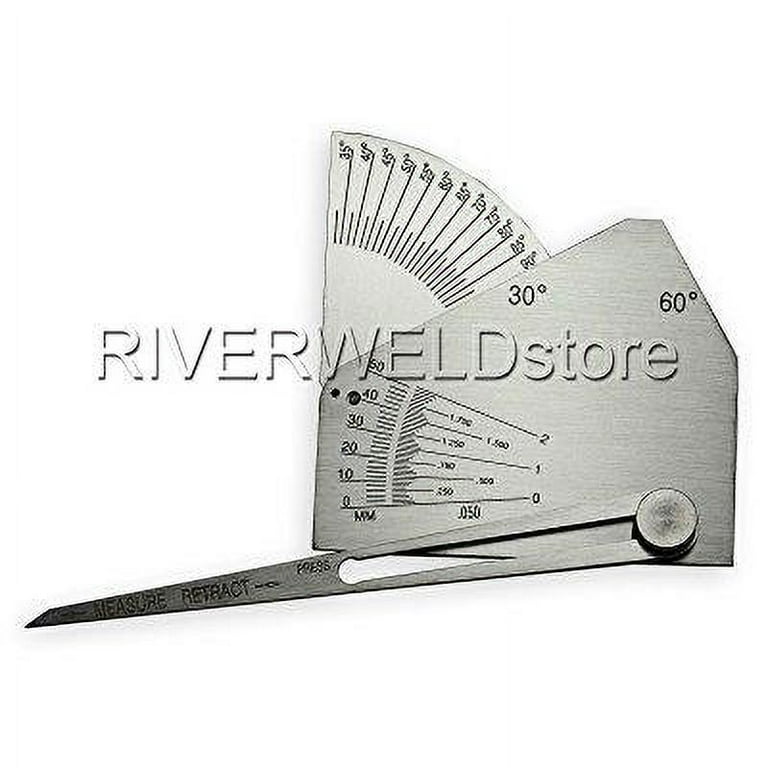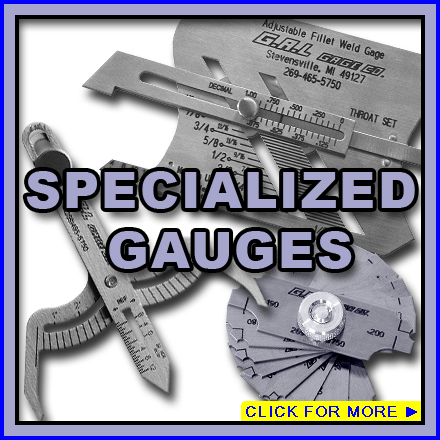Innovative Strategies to Fillet Weld Evaluation and Screening: Enhancing Weld Quality and Conformity Specifications
In the world of welding, the top quality and honesty of fillet welds play an important duty in ensuring the structural stability and integrity of various industrial components. With the constant drive for boosted effectiveness and compliance with rigid standards, the exploration of cutting-edge techniques to fillet weld inspection and testing has actually become crucial. As sectors advance, the conventional methods might no more be adequate in satisfying the needs of contemporary welding applications (Gauge Fillet Weld). By embracing innovative technologies and approaches, a new perspective of possibilities emerges in the realm of weld high quality evaluation and adherence to conformity requirements.
Advanced Non-Destructive Testing Techniques
Making use of state-of-the-art modern technologies, advanced non-destructive screening techniques play a crucial role in making sure the stability and top quality of fillet welds. These methods, such as phased range ultrasonic screening (PAUT) and magnetic particle screening (MPT), offer in-depth understandings into the weld's inner structure without causing any kind of damage to the product. PAUT, for example, utilizes numerous ultrasonic aspects to evaluate the weld from numerous angles, providing a comprehensive visualization of prospective flaws like absence of blend or splits.
Similarly, MPT works in spotting surface-breaking issues by using a magnetic area and iron fragments to the weld area. This approach is especially valuable for determining discontinuities that might compromise the weld's strength. By employing these advanced non-destructive screening strategies, weld examiners can precisely analyze the quality of fillet welds, guaranteeing compliance with industry standards and policies. The capability to find defects early not just boosts weld high quality yet additionally avoids pricey rework or failings in architectural honesty, underlining the significance of these ingenious testing strategies in welding examinations.
Robotics and Automation in Evaluation

The assimilation of robotics and automation has reinvented the evaluation procedure for fillet welds, boosting effectiveness and precision in quality assessment. Robotics supply specific control and repeatability in checking welds, making certain regular and trustworthy outcomes. Automated systems can be configured to follow particular assessment courses, making sure detailed insurance coverage of welds and reducing the threat of human error.
Robotic evaluation systems outfitted with sophisticated sensing units can identify and determine weld functions with high accuracy, supplying detailed information for evaluation. These systems can recognize issues such as fractures, absence of blend, and porosity, allowing prompt corrective actions to be taken. In addition, robotics and automation enable real-time information collection and analysis, giving immediate comments to drivers and promoting quick decision-making processes.
Furthermore, making use of robotics and automation in fillet weld examination enhances general productivity by minimizing examination times and boosting inspection throughput. By enhancing the evaluation process, makers can make certain weld top quality and compliance standards are fulfilled successfully, inevitably bring about set you back savings and enhanced product high quality.
Making Use Of Artificial Knowledge for Evaluation
Artificial knowledge plays a crucial role in improving the efficiency and precision of analysis in fillet weld evaluation procedures. By using the power of AI, inspectors can streamline the analysis of weld high quality and compliance criteria, leading to more trustworthy and accurate results. AI formulas can swiftly process substantial quantities of information from weld assessments, finding flaws or incongruities that may be testing to identify with the naked eye. This advanced modern technology enables real-time surveillance of weld high quality, permitting instant rehabilitative actions to be taken if any concerns are found.
Additionally, AI systems can discover from previous examination information, continually boosting their capacity to recognize possible flaws and discrepancies in fillet welds. This adaptive learning capability improves the general quality control process, decreasing the likelihood of human mistake and guaranteeing that welds fulfill the called for criteria. By incorporating expert look at here system into fillet weld evaluation, sectors can accomplish greater levels of efficiency, consistency, and conformity in their evaluation methods.
Portable Devices for On-Site Inspection
Enhancing field evaluation efficiency, the adoption of portable devices revolutionizes on-site assessment processes for fillet welds. These tools offer versatility and convenience, enabling examiners to perform thorough evaluations in numerous areas, consisting of remote or tough atmospheres. Portable tools such as ultrasonic screening devices, magnetic bit inspection equipment, and see it here digital radiography systems offer real-time data and high-resolution imaging abilities, allowing quick decision-making and instant responses on weld quality.
One considerable advantage of mobile devices is their capability to improve inspection treatments, decreasing downtime and boosting total performance - Gauge Fillet Weld. Inspectors can conveniently carry these tools to various work sites, removing the need for transporting hefty machinery or components to off-site facilities. Furthermore, the transportability of these devices promotes cost-effectiveness by reducing transportation expenditures and accelerating inspection timelines
Moreover, the usage of mobile tools for on-site inspection advertises positive quality assurance actions, as assessors can promptly identify and resolve any potential welding defects or inconsistencies. By incorporating these innovative innovations into on-site evaluation techniques, welding professionals can make sure conformity with sector criteria and boost weld high quality, ultimately resulting in improved structural stability and safety and security in numerous welding applications.
Combination of Information Administration Systems

Having actually optimized on-site assessment processes via the utilization of portable tools, the next stage involves the smooth assimilation of data administration systems to better boost effectiveness and information analysis abilities in fillet weld inspection and screening. By integrating data management systems right into the examination procedure, companies can streamline data collection, storage space, and evaluation. This combination permits real-time surveillance of weld top quality, prompt recognition of flaws, and punctual decision-making to remedy any useful source kind of issues that may arise throughout the examination process.
The integration of data monitoring systems allows seamless communication in between different stakeholders entailed in the inspection process, cultivating cooperation and boosting overall high quality control measures. Ultimately, the assimilation of data management systems offers to raise the standards of fillet weld assessment and testing, guaranteeing compliance with sector policies and boosting weld top quality.
Final Thought
Finally, ingenious approaches to fillet weld evaluation and screening have actually dramatically boosted weld high quality and compliance criteria. Advanced non-destructive testing methods, robotics, automation, man-made intelligence, portable tools, and information administration systems have actually changed the way weld inspections are carried out. By utilizing these innovations, industries can ensure that welds fulfill the needed quality requirements and laws, eventually enhancing overall performance and safety and security in welding processes.

Having enhanced on-site evaluation procedures via the utilization of portable tools, the next phase involves the smooth combination of information management systems to further improve effectiveness and data evaluation capacities in fillet weld evaluation and screening. Inevitably, the assimilation of data monitoring systems serves to raise the standards of fillet weld assessment and testing, making certain compliance with industry guidelines and improving weld high quality.
